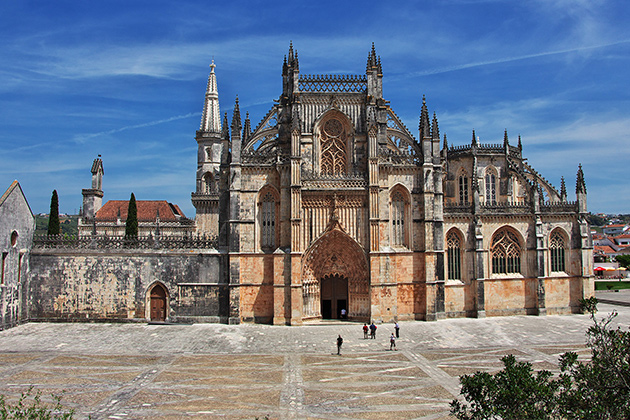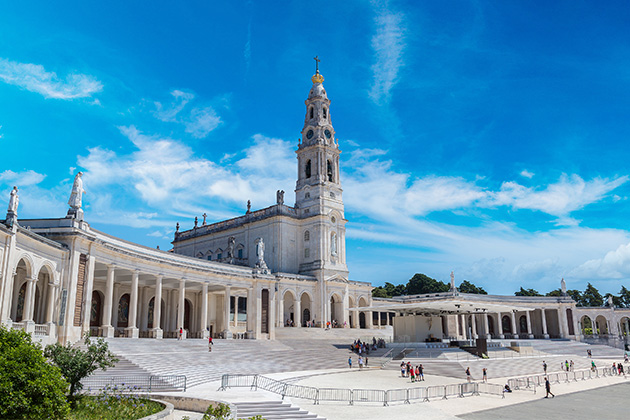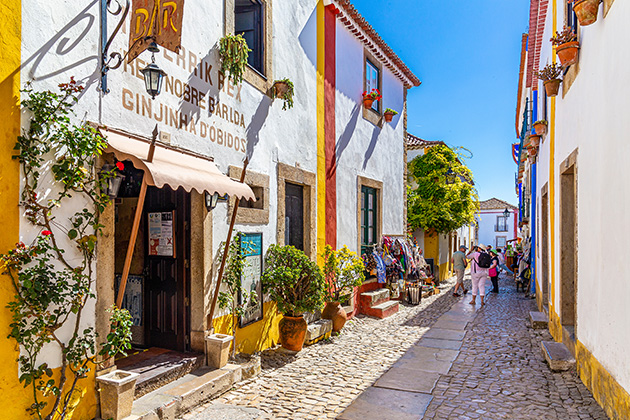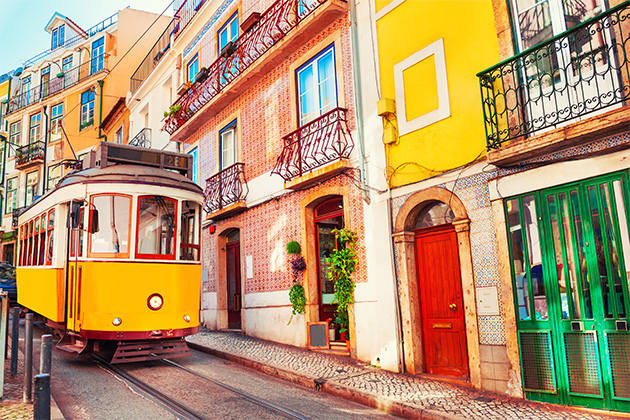
There is no lack of modern local or traditional accommodation in XXI Century Lisbon, a city that is tailored for tourism, whether in the heart of the busy Chiado district, or in the cultural area of Belém. Read on for tips on where to stay in Lisbon.
Inside the city
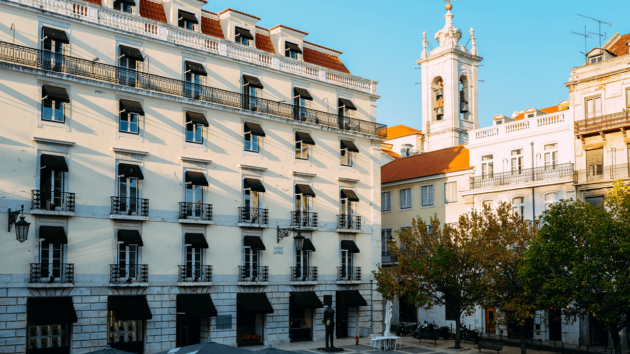
Travellers are always eager to discover new things and, if that is your case, nothing beats staying in the city centre. Defining the city centre in Lisbon, though, is no easy task, since the different neighbourhoods have such strong identities that they each stand out. But let’s focus on the axis that runs from the Baixa Pombalina to the Chiado as being the hotspot and one of the top places to stay in Lisbon. Just imagine going to bed and waking up in this part of the city.
Wake up to the sounds of the trams or the bells of the São Nicolau or Nossa Senhora dos Mártires Basilica. Time to get out of bed and enjoy breakfast at one of the best pastry shops in the area. In the Baixa you can’t miss the Confeitaria Nacional (established in 1829 and ranked as a building of public interest) which welcomes its guests with 190 years of experience and its unique tea-room décor.
One of their specialties is the Bolo-Rei Christmas cake, but all their sweets are excellently crafted, and even the traditional slice of toast can turn breakfast or tea-time into a classical Portuguese experience. There is also the Café Gelo (where Portuguese surrealists used to gather in the 1950’s) and Nicola, in the Rossio, (one of the city’s first bars, opened by Italians in the XVIII Century and one of the favourite haunts of famous Portuguese poet Bocage), or the Casa Chinesa, in Rua do Ouro (very popular among the locals, it doubles as a record store, so your breakfast will be accompanied by music). These are the pastry shops you mustn’t miss.
As you make your way up to the Chiado, make sure to stop by A Brasileira and get a sense of the environment and the history of this establishment, which was something of a second home to poet Fernando Pessoa. If you have a weakness for croissants, however, you’ll want to try the neighbouring Bénard, which is actually older.
If you’re staying somewhere with a kitchen and would like to prepare your own coffee before leaving to see the sites, then the smell of coffee being ground in the almost 100-year-old A Carioca (one of Lisbon’s Historic Shops), in the Rua da Misericórdia, is a great choice. These aromas have marked many great memories.
Pastry and coffee shops are an important part of Portuguese culture. A “coffee shop lifestyle” is a common expression. But there is more to the Baixa-Chiado axis than coffee shops. Besides a great offering of street music, traditional commerce and fashion shops, avant-garde or traditional restaurants (some pricey, others very accessible), the beauty of the surroundings is inviting in and of itself.
So make sure to get around on foot, and not miss out on spots like the Santa Catarina, and the São Pedro de Alcântara belvederes, which command some of the most stunning views of Lisbon; the Bairro Alto, with its strong neighbourly vibes, restaurants and bars; the Largo de São Carlos, where you will find the National Theatre of the same name, and, just a short distance away, the emblematic São Luiz Theatre; Rua Augusta, the major commercial and pedestrian street in the Baixa district; the Praça do Comércio, which opens out on to the Tagus; the neogothic Santa Justa Elevator, from where you get a unique view of the city, Rua da Bica de Duarte Belo, with its famous lift and the river in the background, and the Chiado National Museum of Modern Art. There are plenty of other very interesting spots to see, of course, but at least now you know where to start.
Living like a local
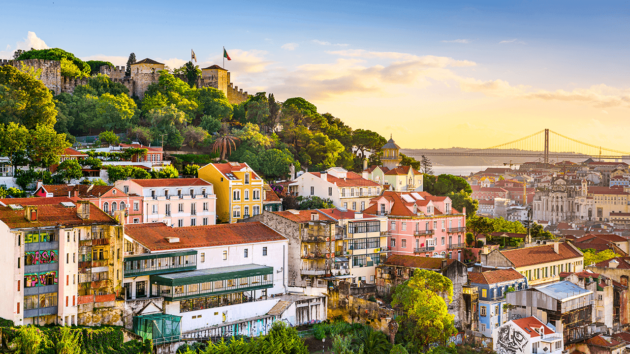
If you would rather be close enough to the centre to be able to walk, but far enough from the hustle and bustle, then your best bet is the Graça, Campo de Ourique, and Estrela neighbourhoods. Typically Lisbon, they are all quite quiet and well served by trams, offering plenty of local commerce a family-friendly atmosphere and neighbourly feel.
Let us begin with the Graça neighbourhood, which overlooks the city, from the Senhora do Monte and Sophia de Mello Breyner Andresen belvederes, two of the city’s finest. Graça is one of the best places to stay in Lisbon, located as it is atop a sunlight-filled hill, but also because it allows you to make plentiful use of the famous number 28 tram and is situated near some of the most vibrant locations in the Portuguese capital, such as the Feira da Ladra flea market or the National Pantheon, bars such as Casa Independente) and the busy Intendente district, very close to the Damas bar and concert hall.
You can also find more traditional restaurants such as Casa de Pasto O João, Cardoso da Estrela de Ouro and O Satélite, which have a fully Portuguese DNA, or enjoy Laura’s fried codfish cakes and hear to tall tales at the Tasca do Jaime, where you can also listen to popular improv fado music every Sunday.
Campo de Ourique is also a relaxed neighbourhood, as can be seen by the local pastry shops and the cosy restaurants, or the public leisure parks, such as the Jardim da Parada, also known as the Jardim Teófilo Braga. But it is also very close to some important cultural and historic sites, such as the Prazeres Cemetery, where some important historic and cultural figures from Portugal’s history are buried, including author José Cardoso Pires and politician Mário Soares); the Casa Fernando Pessoa, where the famous Portuguese poet lived out the last 15 years of his life and which now hosts exhibitions about different aspects of his literary life; or the Campo de Ourique Market, which was inaugurated in 1930 to supply the local population and is now aimed more at gourmet restaurants and experiences.
Campo de Ourique is also served by the number 28 tram, the A Tentadora pastry shop (an Art Noveau landmark), and the animated evenings and delicacies of the A Padaria do Povo, a neighbourhood classic.
The Estrela neighbourhood is only a short distance away. This district boasts two important landmarks: the Estrela Basilica and the Jardim da Estrela. The Basilica was built in 1779 and is a sort of simplified replica of the National Palace in Mafra (a UNESCO World Heritage site), which draws one into its baroque interior, with its Pompeo Botoni and Pedro Alexandrino paintings. Its large white cupula can be seen from several points in the city, making it an element in the landscape of any visit to Lisbon.
Just across the road you will find the gateways to the beautiful Jardim da Estrela, a romantic and inspiring garden that was opened to the public in 1852, with its sculptures and nooks that beg you to take a stroll. On the subject of gardens, mention must also go to the 10 hectares of the Tapada das Necessidades which used to be a royal hunting ground but is now used for relaxing picnics in the sun.
Business trips
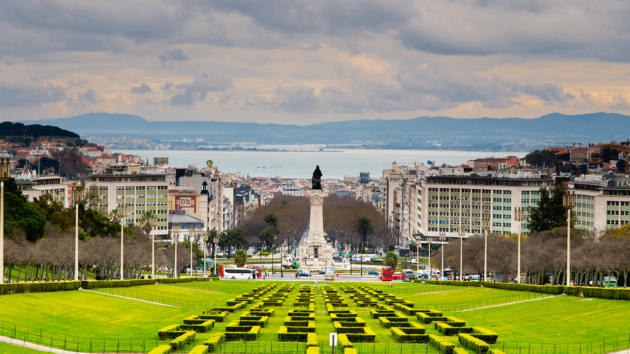
The Avenidas Novas area of Lisbon is best known for its connection to the business world. It begins on Avenida da Liberdade, the nerve centre of the city and home to some of the most famous brands, and runs to Campo Grande, including renowned locations such as the Praça do Marquês de Pombal, the Parque Eduardo VII, Campo Pequeno, Praça de Espanha, Picoas or the Amoreiras.
Depending on how far you are willing to walk, you can reach the Chiado or the Baixa Pombalina, and take a stroll, but there is plenty to visit in the Avenidas Novas themselves. The Calouste Gulbenkian Museum, surrounded by beautiful gardens, is one of the capital’s most important art centres, and a very popular destination in the city.
A very short distance away you can lose yourself among the seven stories of the El Corte Inglés shopping centre. In the evening you can take in a movie at Nimas, one of the few independent cinemas left in the city, a show at the Culturgest or a concert in the Campo Pequeno bull ring. Or, if you prefer, at any time of the day, just walk down Avenida da Liberdade and sit at one of the kiosk terraces to soak in the movement around you.
There is one other part of the city that is also known for being a business centre. The Parque das Nações, at the Eastern end of the city, next to the River, is one of the newest additions to Lisbon, having been built in 1998 to host the World Fair. It stands out for its modern architecture and has important sites to see, such as the Portugal Pavillion, designed by Álvaro Siza Vieira. At the Parque das Nações you can also catch a break from the concrete of the city and enjoy the stingrays and sharks in the Oceanarium, go jogging among the 80 hectares of the Parque Tejo or ride the cable car over the river.
The cultural circuit
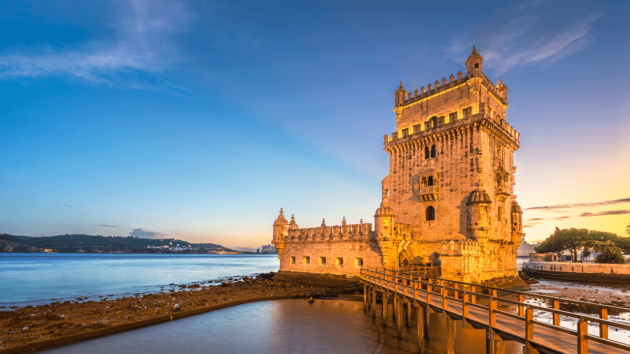
Even though there are museums and venues spread all over the city, Belém has become a particularly thrilling cultural hotbed, making it an especially interesting area to bear in mind when planning a stay in Lisbon.
The closeness to the river makes it particularly inviting for walks, and there is a long walking and bicycle path for that purpose, but spots like the Belém Cultural Centre, the Arts, Architecture and Technology Museum (MAAT), the National Coach Museum and the Jerónimos Monastery (partly taken up by the National Archaeology Museum) make it a unique region in terms of culture and art. You could also include another museum on your trip. The Tropical Botanical Garden, created in 1906 as a teaching space about the different botanical species that made up the Portuguese colonial world.
Belém is also very rich in monuments, the prime examples being the emblematic Torre de Belém and the Padrão dos Descobrimentos, which both evoke the age of Portuguese discoveries, and the incredible National Ajuda Library, which is one of the country’s oldest.
And make sure to stop off at the Pastéis de Belém, established in 1837, which guards its secret recipe for one of the most famous examples of traditional Portuguese pastry.
